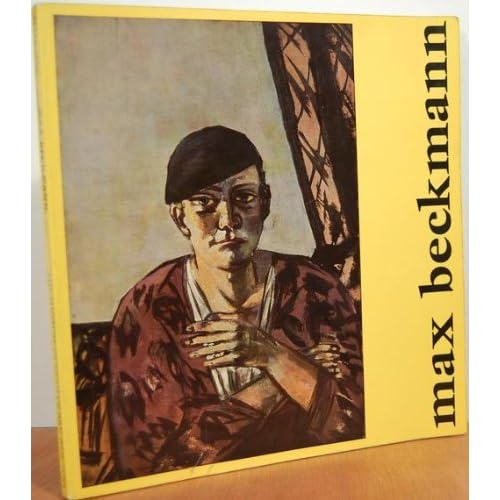Max Beckmann
Category: Books
Max Beckmann Details
Max Beckmann. German Expressionist. Very nice copy, clean covers, perfect images and text. Spine is whole and uncreased. Read more

Reviews
This volume is the catalogue that accompanied the large Beckmann retrospective arranged by the Tate Modern in London and the Museum of Modern Art in New York and presented at the Centre Georges Pompidou in Paris from September 2002 to January 2003, at the Tate Modern from February to May 2003, and at the MoMA from June to September 2003. It was a quite comprehensive exhibition, drawing on the resources of over thirty-five international lenders and contributions from many anonymous private collections. The exhibition was curated by Robert Storr, Senior Curator at the MoMA, and Sean Rainbird, Senior Curator at the Tate, who was also the editor of the catalogue. The book is a very good general survey of Beckmann’s work, presenting over 160 reproductions of his paintings, watercolors and drawings, sculptures, and prints and portfolios, and for the most part the reproductions are excellent in clarity and color. (Almost all the best known masterpieces are here, and the many non-exhibited paintings mentioned in the texts are referenced to the Göpel catalogue raisonné. One genre, however, seems to be somewhat underrepresented among the 830+ paintings in his oeuvre: the pure still life with objects ["Stillleben mit . . ."], of which he painted a great many, in all creative phases of his career.) There is no separate catalogue section with individual comments; the works are presented in a generally historical arrangement as they are discussed in the texts, and exhibited works not mentioned in the essays are grouped in several sections throughout the volume. There are ten primary scholarly essays and several shorter artistic appreciations (e.g., Ellsworth Kelly, Leon Golub, William Kentridge). There is little specifically aesthetic commentary; most of the essays focus on putting Beckmann into appropriate contexts, either the artistic contexts of early twentieth-century schools and movements or the social/historical contexts of the time, which was particularly fraught for a German artist whom the Nazi authorities branded as “degenerate” and who was forced into various kinds of exile and emigration. Other prominent topics of the essays include his influence on younger artists (Robert Storr nicely calls him “a father figure without progeny” [12]); his philosophical/theosophical interests and their relation to his aesthetic thought; his quest to revitalize antiquated forms, especially the triptych; his Italian paintings; and his preoccupation with what is sometimes called the “poetics of space.” The essays are highly informed and meticulously annotated in a solidly scholarly manner, but there is little scholarly jargon; they are all quite conversational in style and easily approached by the layman. The apparatus consists of a very useful 23-page chronology well illustrated with topical photographs and supported by excerpts from his diaries and letters; a selected bibliography with a compilation of Beckmann’s own writings; a list of the exhibited works with curatorial data; and a comprehensive index. This is not the largest or most substantial Beckmann book available, and, since it is a compendium of essays by various hands, many topics and points of view are not represented. But the essays cover important facets of the artist’s work and the reproductions are copious and fine, and I recommend it highly as an informative and comprehensive overview.[ISBN 0-87070-241-6]


